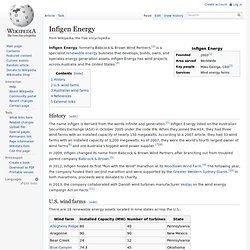

Dogger Bank wind farm plan off Teesside coast - BBC News. A giant offshore wind farm that could provide power for up to two million homes has been given the go-ahead by the government.

Dogger Bank Teesside A and B would feature 400 turbines, with power cables coming onshore near Redcar to connect with the National Grid at Lackonby. Developers, the Forewind consortium, said it could create almost 5,000 jobs during construction. Once fully operational, it would power up to two million homes. Forewind is made up of four international energy companies - RWE, SSE, Statkraft and Statoil - which joined forces to bid successfully to develop the Dogger Bank zone. In February, it was granted planning consent for Dogger Bank Creyke Beck, a scheme off the Yorkshire coast, Together, they will form one of the largest offshore wind farms in the world. General manager Tarald Gjerde said it would create "significant economic benefits". The National Federation of Fishermen's Organisations said Dogger Bank was an important site for fishing.
Wind power in the United States. Wind power in the United States is a branch of the energy industry, expanding quickly over the last several years.

As of the end of 2014 the capacity was 65,879 MW. [1] This capacity is exceeded only by China[2] and the European Union[3] 11,895 MW of wind power was installed in 2012 alone, representing 26.5% of new power capacity. The U.S. wind industry has had an average annual growth of 25.6% over the last 10 years (beginning of 2005-end of 2014).[1] Projects totalling 12,000 MW of capacity were under construction at the end of 2013, including 10,900 MW that began construction in the 4th quarter.[4] For the 12 months through December 2014, the electricity produced from wind power in the United States amounted to 181.79 terawatt-hours, or 4.44% of all generated electrical energy.[5] The U.S.
Department of Energy’s report 20% Wind Energy by 2030 envisioned that wind power could supply 20% of all U.S. electricity, which included a contribution of 4% from offshore wind power. The U.S. Wind power in California. California wind resources Wind power in California refers to the 5,829 megawatts (MW) of wind powered electricity generating capacity operating within California as of June 2013.[1] California's wind power capacity has grown by nearly 350% since 2001, when it was less than 1,700 MW. [2][1] As of the end of September 2012, wind energy (including that supplied by other states) now supplies about 5% of California’s total electricity needs, or enough to power more than 400,000 households.

Most of California's wind generation is found in the Tehachapi area of Kern County, with some big projects in Solano, Contra Costa and Riverside counties as well. California presently ranks second nationwide in terms of capacity, behind Texas and just ahead of Iowa.[1] History[edit] Wind power in California has been an area of considerable activity for many years. Installed capacity growth[edit] Uncertain future for wind power in Australia. 15 January 2015Last updated at 15:52 ET By Jon Donnison BBC News, Sydney South Australia is close behind environmentally friendly Denmark when it comes to wind power There are two things you notice as you travel through the vast expanses of South Australia: wheat and wind.

The former sustains the economy. The latter provides the power. There are huge golden wheat farms stretching for hundreds of kilometres. Up close, each turbine is massive, with a wingspan of more than 80m (262ft). Each turbine provides enough electricity to power 1,000 homes. Australia doesn't often get credit for its environment policy but when it comes to wind power, the state of South Australia is among the world's leaders. Continue reading the main story “Start Quote. Ecotricity windfarm project hopes to power more than 50,000 homes a year.
Ecotricity, one of the new breed of independent energy suppliers, has teamed up with Skanska, the construction group, in a bid to build £500m worth of onshore windfarms in the UK within five years.

Dale Vince, the founder of Ecotricity, said it had taken his firm 17 years to build capacity that generates 70 megawatts of wind power but he was hoping to construct 100MW of schemes – enough to power 57,000 homes – every year. He admitted the major expansion plans could be affected if the Conservatives win the general election next year and pressed ahead with plans to drastically reduce onshore wind energy. “Obviously it is a concern but we are still confident that anything (windfarms) in planning up until the end of next summer should be immune from political risk,” he explained. Steve Cooper, a director at Skanska Infrastructure Development, said the involvement with Ecotricity helped it to meet its wider green agenda. Infigen Energy. Infigen Energy, formerly Babcock & Brown Wind Partners,[3] is a specialist renewable energy business that develops, builds, owns, and operates energy generation assets.

Infigen Energy has wind projects across Australia and the United States.[4] History[edit] The name Infigen is derived from the words infinite and generation.[5] Infigen Energy listed on the Australian Securities Exchange (ASX) in October 2005 under the code IFN. Wind power in Australia.